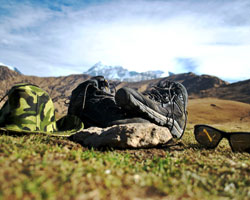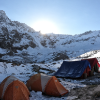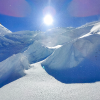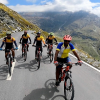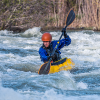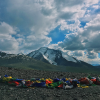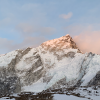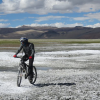A little after insurance for adventure activities was introduced in India, we made it mandatory for every member embarking on a trek with us to be insured. Time and again, we have received questions from our participants regarding this:
“Do I really need to get myself insured before going on a trek?”
“Why is your premium higher than most organisations?”
“Why can’t you make it optional like other organisations have?”
Contrary to its long years of existence, the penetration of the insurance sector in India has been abysmally low.
Insurance has oftentimes been viewed as an expense and never as an investment in safety. Not surprisingly, insurance schemes for adventure activities were unheard of until the year 2016. The lack of regulations and safety standards within the adventure sector discouraged insurance companies from taking the plunge because they feared the claims would run high.
“When we started Bikat Adventures, we wanted our team members heading into the trails to be insured. No insurance agency was willing to take us up on our request because of the lack of regulations.” –Sushant, one of our Founders
So, we looked for ways to prove our credibility as an organisation.
“We applied for MOT (Ministry of Tourism) Registration first. They conducted a stringent audit of our processes and provided us with a certification. Using the MOT certification, we were able to formulate a tie up with an insurance company in 2017.” –Girish, one of our founders.
It felt like a small win in itself for it was an indirect stamp of approval for the credibility of an organisation.
Following this, we made the decision to make it mandatory for our participants to be insured as well.
Our decision was based on two reasons:
1. The nature of our activity
We noticed that all our clients abroad got themselves insured in their home country when booking a trek with us. The same couldn’t be said of our participants in India. Heading into the mountains leaves one vulnerable to a number of potential hazards: a fall, fracture, AMS, HAPE, HACE etc.
“We wanted to make sure our participants were protected against all of these. During the initial years of launching insurance in the adventure sector in India, Altitude Mountain Sickness was not covered in the policy. Without this, trek insurance is no good especially for activities situated in the Himalayas. So we insisted on getting this clause added. This is one of the reasons our premiums are higher than the rest. The other reason is that the coverage limit increases proportionally with the difficulty level of a trek. This automatically reflects in the premium as well.”- Girish
2. The reality of Evacuation facilities in India
The infrastructure for rescue in India is yet to be developed. At present, most rescue operations continue to be carried out on foot. Combined with the remoteness of the regions and lack of connectivity any emergency situation could turn into a nightmare if one is not well prepared.
The issue of connectivity has been dealt with to an extent from our end.
“Earlier we weren’t allowed to carry satellite phones on our trails. As of last year, this rule has been lifted which has been a huge boon. Satellite phones allow us to stay in constant touch with the base and exchange updates on weather and terrain conditions.”-Sushant
But getting satellite phones is no easy feat. Sushant and Sandeep (our Operations Manager) are well acquainted with the gruelling process of acquiring one.
“It is not like getting regular SIMs. Currently, only one company issues Satellite phones in India, BSNL. The phones are expensive and getting approvals takes considerable time and work. As of now, we have strategically assigned our satellite phones to accident prone trails where ground rescue takes significant time. For instance, on the Rupin Pass this year, one of our participants injured her knee pretty badly at the Lower waterfall campsite. Since, we had a Satellite phone, we could call for Heli rescue immediately. It took six hours to carry out the evacuation. Without the phone, the whole process would have probably taken us two days by foot” –Sandeep
At the moment, Heli rescues are not easy to arrange because there are no full-fledged companies offering services for the sole purpose of rescue in India.
“Each state has its own set of rules. For instance, to arrange for Heli rescue in the Uttarakhand region, we first need to contact the Sub District Magistrate of the area with the co-ordinates of our team in the mountains. Once we receive permission from the SDM, we will need to contact the SDRF who will then arrange for a Heli.
These Helicopters take off from cities close by like Shimla in Himachal, Dehradun in Uttarakhand etc. Sometimes when helicopters are unavailable at these bases they are arranged from cities farther away. This takes longer not only because of the added distance but also because they stop along the way for fuel refills.
And lastly, we need to be prepared for all kinds of possibilities. What if there are no helicopters available in bases close by and we can’t afford to lose time with the rescue either? For this we generally make use of commercial helicopters run by private groups due to a lack of other options in the field.” –Sandeep
We are sharing these details with you to give you a fair idea of the ground picture of facilities available currently. And these facilities are charged by the hour and could cost in lakhs eventually.
Even if one is sure of their capabilities as a trekker and is willing to risk injuries and AMS, we still need to keep in mind that there are two factors that remain out of our control in the mountains: Climate and Terrain. Drastic changes in these two might require evacuations and insurance keeps us protected during these times.
3. Finally, there is one more interesting benefit to insurance.
We learnt about this when we were in conversation with Prateek. He is the Founder of ASC 360, a one of a kind firm that deals exclusively with insurances for adventure activities in India and Nepal.
“Insurance makes trekkers more aware and responsible. This consequently keeps them safe from altitude related problems. For instance, while insuring trekkers for the Chaddar trek, we highlighted instances when the insurance cannot be claimed.
These included specifications on the number of warm layers trekkers should carry, the kind of shoes/boots they should use and there was even one on jumping into the Zanskar River. Videos of jumping into the river have been trending on social media. Watching these, other trekkers naively fix such goals as well. When we explained the consequences exposure to such extreme temperatures would have on their body, there was a visible change in people’s attitudes! Almost 90% of them didn’t jump into the river that season.” –Prateek
So, in its own way Insurance has helped bring in safety standards and regulations into the adventure sector.
This brings us to our final question:
So, why did we make insurance mandatory? Why isn’t it optional?
The truth is making it mandatory has not been the best financial decision. It places us at a disadvantage cost wise which has sometimes discouraged new trekkers from booking with us.
Despite this we choose to keep insurance mandatory because we want to help build a healthy attitude towards trekking and adventure:
Chase challenges after you have eliminated all risks.
Not having insurance makes a trek risky. It is not extra cost incurred but an investment in safety before embarking on a trek. And the only way we could help people see that was by setting a precedent ourselves. This is why we choose to keep it mandatory despite the obvious financial disadvantage it places us in.
No cost saving in the world is worth that. And personally for us, no profit gained from making it optional would be worth the risks either.
It is all about how we align our priorities at the end of the day. And if you ask us, safety stays at the top always.



